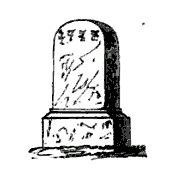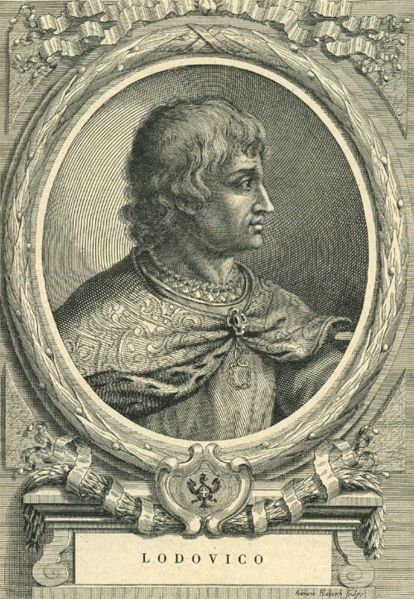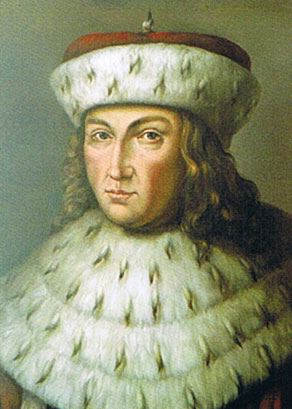|
1413
Year 1413 ( MCDXIII) was a common year starting on Sunday (link will display the full calendar) of the Julian calendar. Events January–December * March 21 – Henry V becomes King of England following the death of his father Henry IV. * July 5 – Battle of Çamurlu: Mehmed I defeats his brother Musa, ending the Ottoman Interregnum. * August 28 – The University of St Andrews in Scotland is chartered by papal bull. * October 2 – The Kingdom of Poland and Grand Duchy of Lithuania sign the ''Union of Horodło''. Date unknown * Samogitia becomes the last region in Europe to be Christianized. * The ''Annals of the Joseon Dynasty'' begin in Korea. Births * February 24 – Louis, Duke of Savoy (d. 1465) * September 8 – Catherine of Bologna, Italian cloistered nun (d. 1463) * November 19 – Frederick II, Elector of Brandenburg (d. 1471) * ''date unknown'' – Joanot Martorell, Spanish writer (d. 1468) Deaths * January 25 &nd ... [...More Info...] [...Related Items...] OR: [Wikipedia] [Google] [Baidu] |
Henry V Of England
Henry V (16 September 1386 – 31 August 1422), also called Henry of Monmouth, was King of England and Lord of Ireland from 1413 until his death in 1422. Despite his relatively short reign, Henry's outstanding military successes in the Hundred Years' War against France made England one of the strongest military powers in Europe. Immortalised in Shakespeare's "Henriad" plays, Henry is known and celebrated as one of the greatest warrior-kings of medieval England. During the reign of his father Henry IV, Henry gained military experience fighting the Welsh during the revolt of Owain Glyndŵr and against the powerful aristocratic Percy family of Northumberland at the Battle of Shrewsbury. Henry acquired an increased role in England's government due to the king's declining health, but disagreements between father and son led to political conflict between the two. After his father's death in 1413, Henry assumed control of the country and asserted the pending English claim t ... [...More Info...] [...Related Items...] OR: [Wikipedia] [Google] [Baidu] |
Mehmed I
Mehmed I ( 1386 – 26 May 1421), also known as Mehmed Çelebi ( ota, چلبی محمد, "the noble-born") or Kirişçi ( el, Κυριτζής, Kyritzis, "lord's son"), was the Ottoman sultan from 1413 to 1421. The fourth son of Sultan Bayezid I and Devlet Hatun, he fought with his brothers over control of the Ottoman realm in the Ottoman Interregnum (1402–1413). Starting from the province of Rûm he managed to bring first Anatolia and then the European territories (Rumelia) under his control, reuniting the Ottoman state by 1413, and ruling it until his death in 1421. Called "The Restorer," he reestablished central authority in Anatolia, and he expanded the Ottoman presence in Europe by the conquest of Wallachia in 1415. Venice destroyed his fleet off Gallipoli in 1416 as the Ottomans lost a naval war. Early life Mehmed was born in 1386 or 1387 as the fourth son of Sultan Bayezid I () and one of his consorts, the slave girl Devlet Hatun. Following Ottoman custom, when he reac ... [...More Info...] [...Related Items...] OR: [Wikipedia] [Google] [Baidu] |
Musa Çelebi
Musa Çelebi (died 5 July 1413) was an Ottoman prince ( tr, şehzade) and a co-ruler of the empire for three years during the Ottoman Interregnum. Background Musa was one of the sons of Bayezid I, the fourth Ottoman sultan.Kastritsis, Dimitris (2007), ''The Sons of Bayezid: Empire Building and Representation in the Ottoman. Civil War of 1402-1413'', Brill, There is no consensus about his mother's origin; she was either the daughter of the bey of the Turkish Germiyanids or a Byzantine princess. After the Battle of Ankara, in which Beyazıt I was defeated by Tamerlane, Musa and Bayezıd were taken prisoners of war by Tamerlane. However, after Bayezıd's death in 1403, he was released. He returned to the Ottoman Empire, which was now in turmoil, and tried to access the throne in Bursa, the Anatolian capital of the empire in 1403. However, three of his brothers were also claimants to the Ottoman throne: İsa Çelebi in Balıkesir and Mehmet Çelebi in Amasya (both in the Ana ... [...More Info...] [...Related Items...] OR: [Wikipedia] [Google] [Baidu] |
Catherine Of Bologna
Catherine of Bologna aterina de' Vigri(8 September 1413 – 9 March 1463)Stephen Donovan (1908). " St. Catherine of Bologna". In ''Catholic Encyclopedia''. 3. New York: Robert Appleton Company. was an Italian Poor Clare, writer, teacher, mystic, artist, and saint. The patron saint of artists and against temptations, Catherine de' Vigri was venerated for nearly three centuries in her native Bologna before being formally canonized in 1712 by Pope Clement XI. Her feast day is 9 March. Life Catherine came from an upper-class family, the daughter of Benvenuta Mammolini of Bologna and Giovanni Vigri, a Ferrarese notary who worked for Niccolò III d'Este, Marquis of Ferrara. She was raised at Niccolo III's court as a lady-in-waiting to his wife Parisina Malatesta (d. 1425) and became lifelong friends with his natural daughter Margherita d'Este (d. 1478). During this time, she received some education in reading, writing, music, playing the viola, and had access to illuminated manuscript ... [...More Info...] [...Related Items...] OR: [Wikipedia] [Google] [Baidu] |
Battle Of Çamurlu
The Battle of Çamurlu was fought on July 5, 1413, between Musa Çelebi and Mehmed Çelebi, both sons of Bayezid I, as the last conflict of the Ottoman civil war known as the Ottoman Interregnum. The battle decided which son of Bayezid I would finally reunite the Ottoman Empire, with Mehmed Çelebi becoming Mehmed I of the Ottoman Empire. Mehmed's invasion and final battle After suppressing Cüneyt Bey's revolt, Mehmed Çelebi gathered his troops at Ankara. With his Dulkadirid father-in-law, he began planning an invasion of Rumelia (the European part of the empire and Musa's stronghold) to defeat his brother, Musa. On his march to Bursa, Mehmed gained contingents of troops from western Anatolia. Upon reaching the straits, Mehmed's army was given passage by ships loaned from Manuel II Palaiologos, who also supplied Mehmed with some troops. Mehmed marched his army from Constantinople to Edirne. He then marched onto Kosovo to join forces with his ally (and also half-uncle) Serbia ... [...More Info...] [...Related Items...] OR: [Wikipedia] [Google] [Baidu] |
Louis, Duke Of Savoy
Ludovico I or Louis I (Italian: Lodovico; 24 February 1413 – 29 January 1465) was Duke of Savoy from 1440 until his death in 1465. Life He was born at Geneva the son of Amadeus VIII, Duke of Savoy and Mary of Burgundy; he was the first to hold the title of Prince of Piedmont. On 1 November 1433 (or 12 February 1434), at Chambéry, he married Princess Anne of Cyprus, an heiress of the Kingdom of Cyprus and the defunct Kingdom of Jerusalem. The family lived in Allaman Castle, Vaud/Switzerland and as Count de Vaud, Savoy tried to conquer the Duchy of Milan, then under the ''Repubblica Ambrosiana'', but failed. In 1452 he received the Shroud of Turin from Margaret de Charny. It was held by the House of Savoy until 1946, at the end of the Kingdom of Italy and bequeathed to the Holy See in 1983. Louis died at Lyon in 1465, while returning from France. Issue Louis and Anne had: # Amadeus IX (Thonon, 1 February 1435 – 30 March 1472), Duke of Savoy, married Yolande of Fra ... [...More Info...] [...Related Items...] OR: [Wikipedia] [Google] [Baidu] |
Grand Duchy Of Lithuania
The Grand Duchy of Lithuania was a European state that existed from the 13th century to 1795, when the territory was partitioned among the Russian Empire, the Kingdom of Prussia, and the Habsburg Empire of Austria. The state was founded by Lithuanians, who were at the time a polytheistic nation born from several united Baltic tribes from Aukštaitija. The Grand Duchy expanded to include large portions of the former Kievan Rus' and other neighbouring states, including what is now Lithuania, Belarus and parts of Ukraine, Latvia, Poland, Russia and Moldova. At its greatest extent, in the 15th century, it was the largest state in Europe. It was a multi-ethnic and multiconfessional state, with great diversity in languages, religion, and cultural heritage. The consolidation of the Lithuanian lands began in the late 13th century. Mindaugas, the first ruler of the Grand Duchy, was crowned as Catholic King of Lithuania in 1253. The pagan state was targeted in a religious crusade by ... [...More Info...] [...Related Items...] OR: [Wikipedia] [Google] [Baidu] |
University Of St Andrews
(Aien aristeuein) , motto_lang = grc , mottoeng = Ever to ExcelorEver to be the Best , established = , type = Public research university Ancient university , endowment = £117.7 million (2021) , budget = £286.6 million (2020–21) , chancellor = The Lord Campbell of Pittenweem , rector = Leyla Hussein , principal = Sally Mapstone , academic_staff = 1,230 (2020) , administrative_staff = 1,576 , students = () , undergrad = () , postgrad = () , doctoral = , other = , city = St Andrews , state = , country = Scotland , coordinates = , campus = College town , colours = United College, St Andrews St Mary's College School of Medicine S ... [...More Info...] [...Related Items...] OR: [Wikipedia] [Google] [Baidu] |
Ottoman Interregnum
The Ottoman Interregnum, or the Ottoman Civil War ( 20 July 1402 – 5 July 1413; tr, Fetret Devri, , Interregnum Period), was a civil war in the Ottoman Empire between the sons of Sultan Bayezid I following the defeat of their father at the Battle of Ankara on 20 July 1402. Although Mehmed Çelebi was confirmed as sultan by Timur, his brothers İsa Çelebi, Musa Çelebi, Süleyman Çelebi, and later, Mustafa Çelebi, refused to recognize his authority, each claiming the throne for himself. Civil war was the result. The Interregnum lasted a little under 11 years, until the Battle of Çamurlu on 5 July 1413, when Mehmed Çelebi emerged as victor, crowned himself Sultan Mehmed I, and restored the empire. Civil war Isa and Mehmed Civil war broke out among the sons of Sultan Bayezid I upon his death in 1403. His oldest son, Süleyman, with his capital at Edirne, ruled the recently conquered Bulgaria, all of Thrace, Macedonia and northern Greece. The second son, İsa Çelebi, es ... [...More Info...] [...Related Items...] OR: [Wikipedia] [Google] [Baidu] |
Union Of Horodło
The Union of Horodło or Pact of Horodło was a set of three acts signed in the town of Horodło on 2 October 1413. The first act was signed by Władysław II Jagiełło, King of Poland, and Vytautas, Grand Duke of Lithuania. The second and third acts were composed by the Polish nobility (szlachta) and Lithuanian boyars, respectively. The union amended the earlier Polish–Lithuanian unions of Krewo and Vilnius–Radom. Politically, Lithuania received more autonomy as, after the death of Vytautas, the Lithuanian nobles could choose another Grand Duke instead of passing the title to Władysław II Jagiełło or his heir. However, culturally, Lithuania and Poland grew closer. Lithuania adopted Polish institutions of castellans and voivodes. Catholic Lithuanian nobles and church officials were granted equal rights with the Polish nobles and clergy. Forty-seven selected Lithuanian nobles were adopted by Polish families and granted Polish coats of arm. Thus the union signified the b ... [...More Info...] [...Related Items...] OR: [Wikipedia] [Google] [Baidu] |
Frederick II, Elector Of Brandenburg
Frederick II of Brandenburg () (19 November 1413 – 10 February 1471), nicknamed "the Iron" (''der Eiserne'') and sometimes "Irontooth" (''Eisenzahn''), was a Prince-elector of the Margraviate of Brandenburg from 1440 until his abdication in 1470, and was a member of the House of Hohenzollern. Biography Frederick II was born at Tangermünde Castle (German: ''Burg Tangermünde''), when Tangermünde was within the Margraviate of Brandenburg, to Frederick I, Brandenburg's first Hohenzollern ruler, and his wife Elizabeth, daughter of Frederick, Duke of Bavaria-Landshut, and Maddalena Visconti. The latter was a daughter of Bernabò Visconti and Beatrice della Scala. As the second son, his brothers included John the Alchemist and Albert Achilles, both of whom also ruled Brandenburg as margraves. In 1421, at age 8, Frederick was betrothed to Hedwig Jagiellon, but she died on 8 December 1431, before the marriage could take place. When Frederick I retired in 1437, he compensated hi ... [...More Info...] [...Related Items...] OR: [Wikipedia] [Google] [Baidu] |
Annals Of The Joseon Dynasty
The ''Veritable Records of the Joseon Dynasty'' (also known as the ''Annals of the Joseon Dynasty'' or the ''True Record of the Joseon Dynasty''; ko, 조선왕조실록 and ) are the annual records of Joseon, the last royal house to rule Korea. Kept from 1392 to 1865, the annals (or ''sillok'') comprise 1,893 volumes and are thought to be the longest continual documentation of a single dynasty in the world. With the exception of two sillok compiled during the colonial era, they are the 151st national treasure of South Korea and listed in UNESCO's Memory of the World registry. Since 2006, the annals have been digitized by the National Institute of Korean History and are available on the internet with modern Korean translation in hangul and the original text in Classical Chinese. In January 2012, the National Institute of Korean History announced a plan to translate them to English by the year 2033. The work was scheduled to start in 2014 with an initial budget of ₩500 mi ... [...More Info...] [...Related Items...] OR: [Wikipedia] [Google] [Baidu] |

.jpg)






